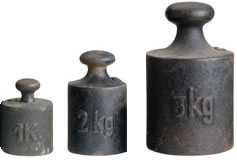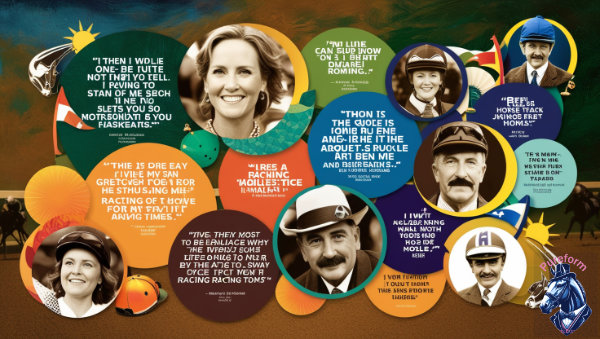PUREFORM
Australian Horse Racing
The Edge
We all want to be competitive in everything we do. And no more so that with punting on horse racing.
Success in punting on horses, in fact most things reduces down to an information war - the people with the best information make the smart moves.
Books have been and still are the best source of general information, and this applies at least as much in the art of racehorse selection and staking as in any other field.
Author Paul Segar has produced textbooks which cover all aspects of punting. The books alone stand as a complete reference but also provide 'food for thought'. You can develop / improve your own ideas as well as learn some new techniques.
Each book is written in plain English with plenty of practical examples in each chapter. Browse the contents of each book or email for further information, if required.
Improve your punting knowledge today - buy one or all of these
books.
Read the books but want more? It's time to do a course.
The Pureform Introduction Course uses a computer program to show you how and when to bet and how to do it successfully. Check out the details
The Benchmark Handicapper Course continues from the Introduction Course and gives you further weapons to apply when making quality value selections. More...
The Introduction to Dutch Betting using the Ratings Calculator Course gives you an introduction to betting using the Ratings Calculator computer software. More...
Buy all three books now:
$70 posted
Handicapping cont...
The two new restricted race class structures are what we will call
1. The Benchmark Events and
2. The Ratings Based Events.
Both basically use the same approach with slight variations. Benchmark events will be considered first.
1. Benchmark Events

The NSW handicapping crew introduced their system which they called the Benchmark Programming and Handicapping System, BPaH for short.
It uses such things as population averages, race quality, recent and historical individual performances, age and sex allowances, head-to-head comparisons, form cycle, track grading and race conditions from multiple years to determine the original figures and then updates are made to these allocations after future racing.
Merit based handicapping is distinct from ‘handicapping on potential’ which is used in some elite race handicapping and other events, often the top events use this elite method.
In merit based handicapping the handicapper reviews the quality of a race performance and then assigns a benchmark figure without consideration towards anticipated or expected performance improvement.
All horses in the NSW racing population were initially allocated a benchmark figure before 1 October 2009.
These benchmark figures after subsequent racing were then adjusted according to such things as a review of race film and steward's reports, race quality and strength, internal and overall race times, beaten margins and weights, track condition, recent and historical race performances and then the results were assessed against the entire NSW horse population.
Generally winning horses will have their benchmark figure adjusted by between 1 ½ and 2 ½ kg (that is 3 to 5 rating points) but larger/smaller winning margins may affect these adjustments.
Horses finishing in the placings and only narrowly beaten may have their rating increased depending on the performance quality but will generally still be eligible for future same rating races. This makes placed runners in a given class somewhat advantaged compared to the winner of the event but often a winner has ‘something up its sleeve’ in terms of overall performance.
As already mentioned rating reductions are not simply given following poor performances but uncompetitive horses in a class may lead to a benchmark reduction of 0.5 to 1 kg (1 to 2 benchmark points).
Some anomalies in the system: horses that are obviously well suited over more ground will not have their benchmark figures lowered following a poor sprint performance. So a Melbourne Cup winner in a 1000m sprint is unlikely to get a benchmark reduction from a poor run.
Similarly a horse found to be lame, suffering a bleeding attack or injured during the running of a race, falling or being brought down, running off or failing to finish or losing its rider would not lead to a rating reduction.
Additionally, consistent provincial and country performers that are uncompetitive at a metropolitan level will not necessarily have their benchmark figure reduced following a poor performance at a higher level.
A 55 rated horse running in an open handicap will not be re-assessed after a last place finish. In other words, this is a merit based system with both merit and demerit being earned not simply given.
Allotting Weights for Future Benchmark Races

In an actual race, horses with benchmark figures lower than the advertised benchmark rating of the upcoming race will be allocated 0.5 kg less weight for each benchmark figure under the nominated race benchmark.
This amount is subtracted from the maximum top weight of 59 kg down to the limit or minimum weight as set for that race. (The nominal top weight value may change.)
Examples from the Racing NSW Benchmark Programming and Handicapping Policy highlight this information:
Example 1: In a Benchmark 70 race a 5yo gelding with a benchmark rating of 65 is nominated. Since the horse is 5 benchmark points lower than the benchmark rating this horse will be allocated a weight of 59 kg – 5 x 0.5 = 56.5 kg
Benchmark races allow horses with higher than the benchmark figure to compete with other lower rated runners. Horses with benchmark figures higher than the benchmark level of a race will be allocated 0.5 kg more for each point their benchmark figure exceeds the race benchmark figure.
Example 2: In a Benchmark 70 race a 5yo gelding with a benchmark figure of 75 is nominated. This horse with a benchmark rating 5 points above the benchmark rating for the race will be allotted 59kg + 5 x 0.5 kg = 61.5 kg
In all mixed sex races, fillies and mares receive a weight reduction of 2 kg compared with the open benchmark figure. So in Example 1, a 5yo mare will carry 56.5 - 2 = 54.5 kg (This weight may be increased to the limit weight if below the allocated race limit). In example 2, the same mare will carry 59.5 kg
Minimum top weights are also maintained. In Example 1, all weights would be raised by 2.5kg if the example horse was the top weighted runner.
Three year olds being somewhat immature at the start of a new racing season receive a weight allowance which changes as the season progresses. A 3yo will receive a weight allowance in NSW open age races for distances of 1800m or longer according to the following table:
| 3yo Weight Concessions | ||||
|---|---|---|---|---|
| Aug-Oct | Nov-Jan | Feb-Apr | May-Jul | |
| 1800m + | -3.5 kg | -2.5 kg | -1.5 kg | -1.0 kg |
Shorter distance events lead to a 1kg reduction in these allowances.
Generally 3yo's do not perform well in open aged races in the early part of a new racing season and hence the rather healthy weight discount.
In some races, the top rated runner will be of a lesser quality than the initial benchmark figures.
For example, a Benchmark 72 event may attract a variety of rated runners with perhaps rated runners including benchmark figures of 75, 78 and even 80 but at the time of final acceptances, the top rated runner has only a benchmark rating of 69.
The race may subsequently be reduced in quality  to a Benchmark 69 with all weights increased to give a minimum top weight of
59 kg (or whatever the minimum top weight is set at that time). This benchmark
reduction does not occur in all Australian states.
to a Benchmark 69 with all weights increased to give a minimum top weight of
59 kg (or whatever the minimum top weight is set at that time). This benchmark
reduction does not occur in all Australian states.
In this system, handicaps are determined according to the benchmark figure for each horse at the time of nomination with the computer rankings internally reviewed by experienced form analysts.
In most cases, weights are allocated using computer software.
Many other minor distinctions apply to this weight allocation system; changes may occur at any time but ultimately the handicapper is responsible for these allocations with the final weights published daily.
Some set weight races to some extent ignore the benchmark ratings and often well priced winners can be found by scrutinising the handicappers figures against the weights carried.
Rating Based Events
Rating Based Handicapping (RBH) is undertaken in various states
and is classified as a ‘fixed’ rating system. 
In essence, horses with a benchmark rating equal to or lower than the rating ‘band’ or ratings range for the upcoming race qualify for a start. As in any race, the ballot system applies.
RATING 0-58
Horses with a Rating equal to or below 58 by close of nominations are eligible.
RATING 0-62
Horses with a Rating equal to or below 62 by close of nominations are eligible.
RATING 0-68
Skipping a few
RATING 0-89Horses with a Rating equal to or below 89 by close of nominations are eligible.
You can get the idea.
Weight carried by each runner is determined by their benchmark figure compared with the race rating of the upcoming race.
Allotting Weights for Future Ratings Based Events
Weight allocation is the same as for Benchmark events. Simply no runner can have a higher benchmark rating than the top benchmark of the upcoming race.
Example 1: In a Ratings 0-68 race a 5yo gelding with a benchmark
rating of 65 is nominated. Since the horse is 3 benchmark points lower than
the race benchmark rating this horse will be allocated a weight of 59 kg –
3 x 0.5 = 57.5 kg 
Example 2: In a Ratings 0-78 race a 4yo mare with a benchmark
rating of 63 is nominated. Since the horse is 15 benchmark points lower than
the race benchmark rating and is a female campaigner she will be allocated a
weight of 59 – 15 x 0.5 – 2 =49.5 kg
Further in this race, the top rated runner is set to carry 56 kg which is 3
kg less than the required 59 kg minimum top weight. All weights are therefore
further raced an additional 3 kg.
49.5 + 3 = 52.5 kg.
In this particular race, the limit weight is set at 54 kg and so therefore the mare will carry 54 kg. The 5yo mare's final weight allotment is 54 kg.
As can be seen from this second example, weight handicapping can become quite complex. Fortunately the handicapper takes care of all the adjustments which are mainly mechanical in nature.
Example 3: In a Ratings 0-78 race a horse with a benchmark
rating of 77 is nominated.
Before the race is set to run the horse wins a race with its
rating increased to 79. It is no longer eligible for this race.
In restricted class races in Victoria, each race will have a minimum top weight of 59 kg. As already suggested in the previous example, given a race has a nominal top weight of 56 kg, that event will see all weights increased by 3 kg.
The most important feature is the maintenance of the minimum top weight with the lower weights adjusted accordingly.
The minimum top weight may vary.
Part 3: Handicapping around Australia




